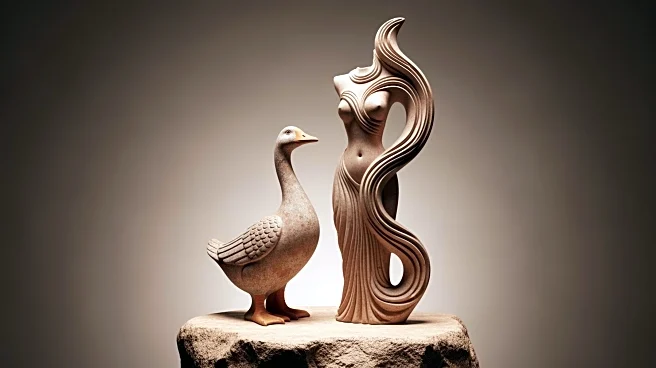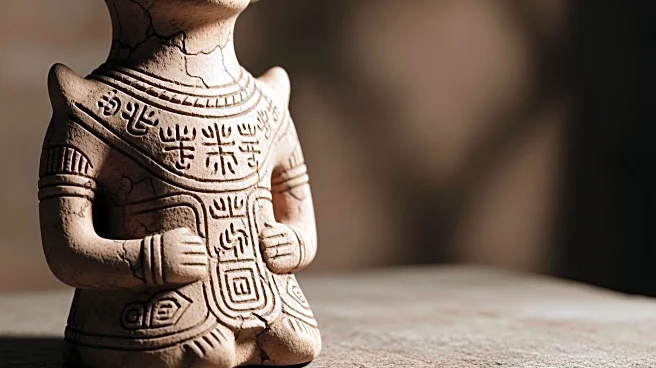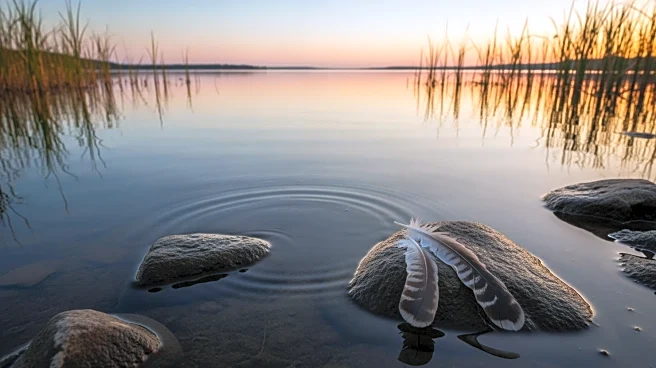What's Happening?
A 12,000-year-old figurine depicting a human-animal interaction has been unearthed at Nahal Ein Gev II, a Late Natufian village site in northern Israel. The discovery was announced by the Hebrew University
of Jerusalem, with archaeologists Leore Grosman, Laurent Davin, and Natalie Munro leading the excavation. The figurine, made of local clay and fired, shows a crouching woman with a goose perched on her back, and traces of red ocher were found on both figures. This figurine is considered the world's earliest depiction of human-animal interaction and the earliest naturalistic representation of a woman found in southwest Asia. The object was recovered from a semicircular stone structure containing burials and ceremonial deposits, suggesting it may depict a mythological or ritual scene. Artifacts from other areas of the village indicate geese were used for food and their feathers and bones for decorations.
Why It's Important?
This discovery provides significant insights into the cultural and symbolic practices of the Natufian people, who lived during a transformative period when human societies were transitioning from mobile hunter-gatherers to settled communities. The figurine highlights the role of imagination and symbolic thinking in shaping human culture, offering a glimpse into the early development of artistic expression and ritualistic practices. Understanding these early interactions between humans and animals can shed light on the evolution of human societies and their relationship with the natural world, contributing to broader archaeological and anthropological studies.












